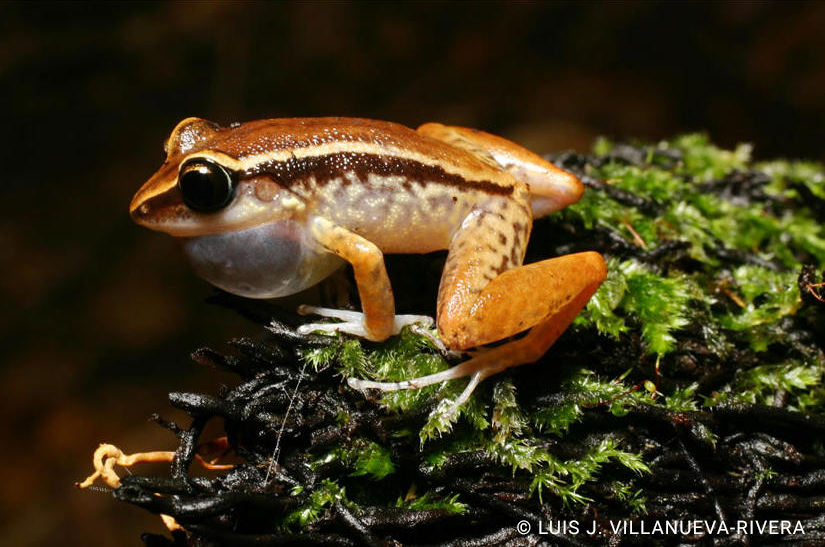About
The Critically Endangered Richmond’s coqui is endemic to Puerto Rico, and lives in mesic forests in several locations across the island.
Richmond’s coqui is one of more than 100 species comprising the diverse Eleutherodactylus genus. These species were previously considered part of an even larger genus containing more than 700 species, before it was split into several smaller genera.
Though there is still much work to be done regarding the taxonomy of this large group of frogs, which is distributed across Central America and the Caribbean, it is thought they diverged from all other amphibians around 50 million years ago. In evolutionary terms, this means these frogs are as distantly related to other amphibians as wolves are to tigers!
There has been an unexplained decline of this species during the last two decades or more. In 2008, the IUCN Red List stated that there is a predicted 80% decline in number of mature individuals over the next ten years.
The cause of the decline in this species is not known, but it is thought that Chytrid fungus linked with climate change might have played a role. The species can be found in several protected areas although further research and survey work is required to determine the reasons of decline and the species current population status.
- Order: Anura
- Family: Eleutherodactylidae
- Population: Rare
- Trend: decreasing
EDGE Score
Distribution
This species has a patchy distribution in the interior uplands of Puerto Rico at an altitudinal range of 40-1,152m above sea level.
Habitat and Ecology
The species natural habitats are subtropical and tropical moist lowland forests and subtropical or tropical moist montane forests. Females lay eggs in rotten logs and the eggs develop directly, where they bypass a larval stage and emerge from the egg as a miniature adult version.
